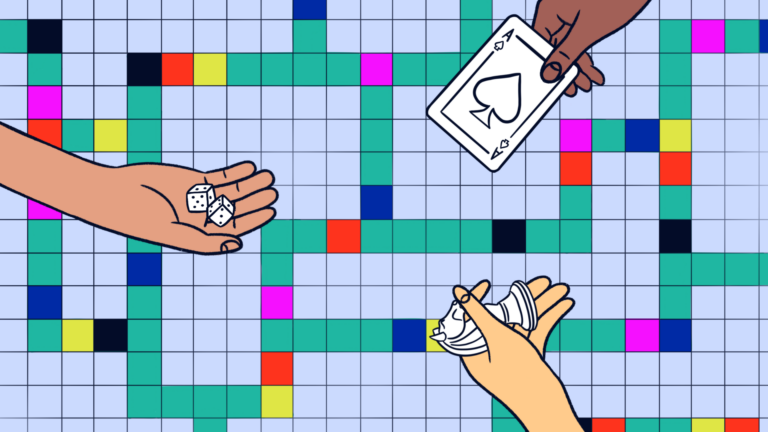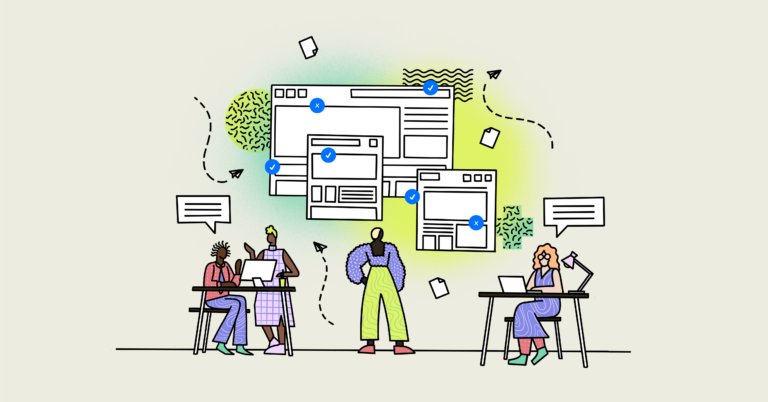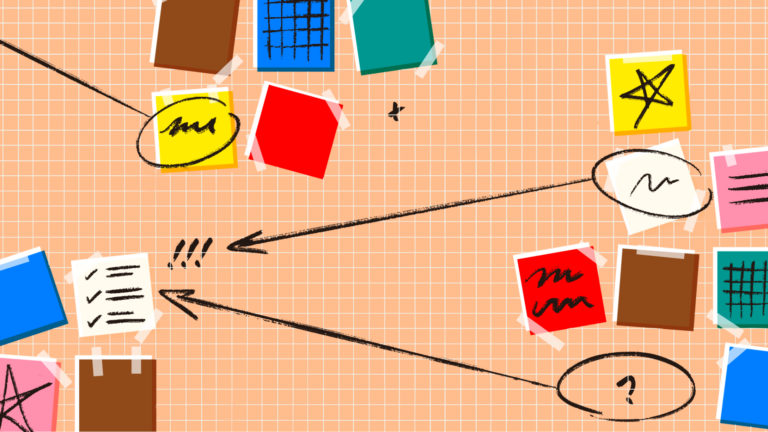Affinity mapping: bridging the gap between research and UX design
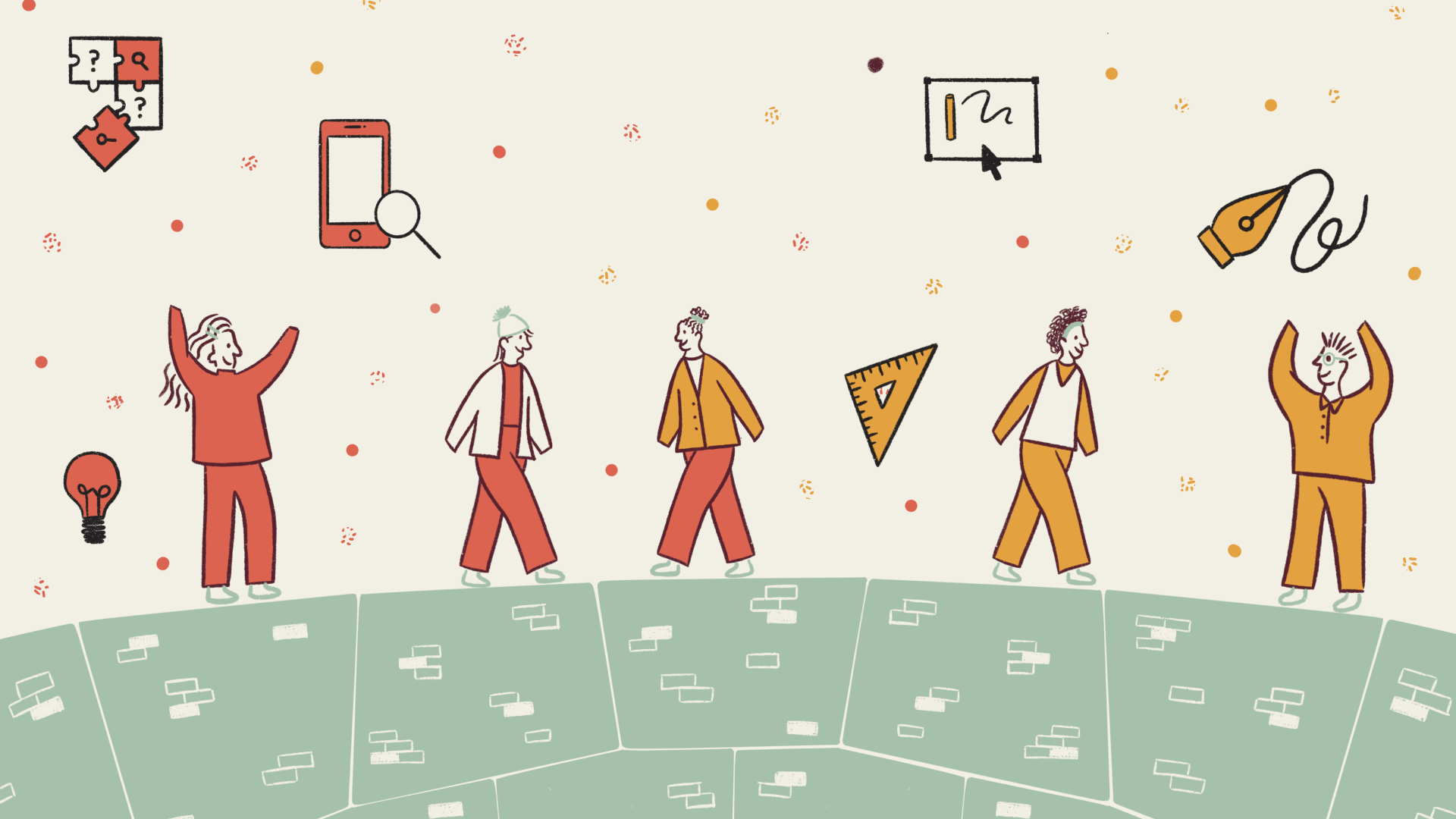
Part of creating a healthy team environment for the duration of a project is finding ways to promote collaboration in a sustainable way that also allows individualism and personal perspectives to thrive. While many variables can contribute to this challenge in a UX team, the area of focus for this article is research and design, as we explore one major tool teams can use to strengthen a collaborative dynamic.
Often, a major contention to this type of team environment is the siloing that occurs within research—acting in its own bubble away from design. If only researchers are involved in data collection, synthesis, and communication of that data, it’s easy for designers to lose sight of what was learned at the start of the project. Especially if the researcher rolls off, the project is segmented into research and then design phases, or team members have contradictory opinions about the data. If research starts without a focus on collaboration, it’s harder to create that ideal team environment.
A tool that helps counteract this is a method for data synthesis known as affinity maps. While they are just one tool in a bucket of many to help solve collaboration and communication problems, here at Think, teams have utilized them as a reliable resource to bring designers into the research. They help designers approach data in a creative yet digestible way that simultaneously allows researchers to synthesize accurately and from various angles.
To see how affinity maps can help teams manage data transitioning, we’ll take a closer look at the challenge that impedes the communication of data, how affinity mapping can ease this, and the benefits that affinity mapping can bring to the overall design process and larger team.
The challenge: A disconnect between research and design
If we look at the design process as it’s understood today, we can see a clear intersection connecting research to design. It may not be a very large intersection, but it’s present. In this context, the designer’s role is to take whatever problem the researcher (or research team) determines and create a viable solution. While this might seem efficient, it lends to the previously mentioned siloing effect that results in an easy dismissal or lack of reliance on the data. After all, designers aren’t really a part of the research or synthesis and have limited to no input in the research process that sets the entire scope of their design.
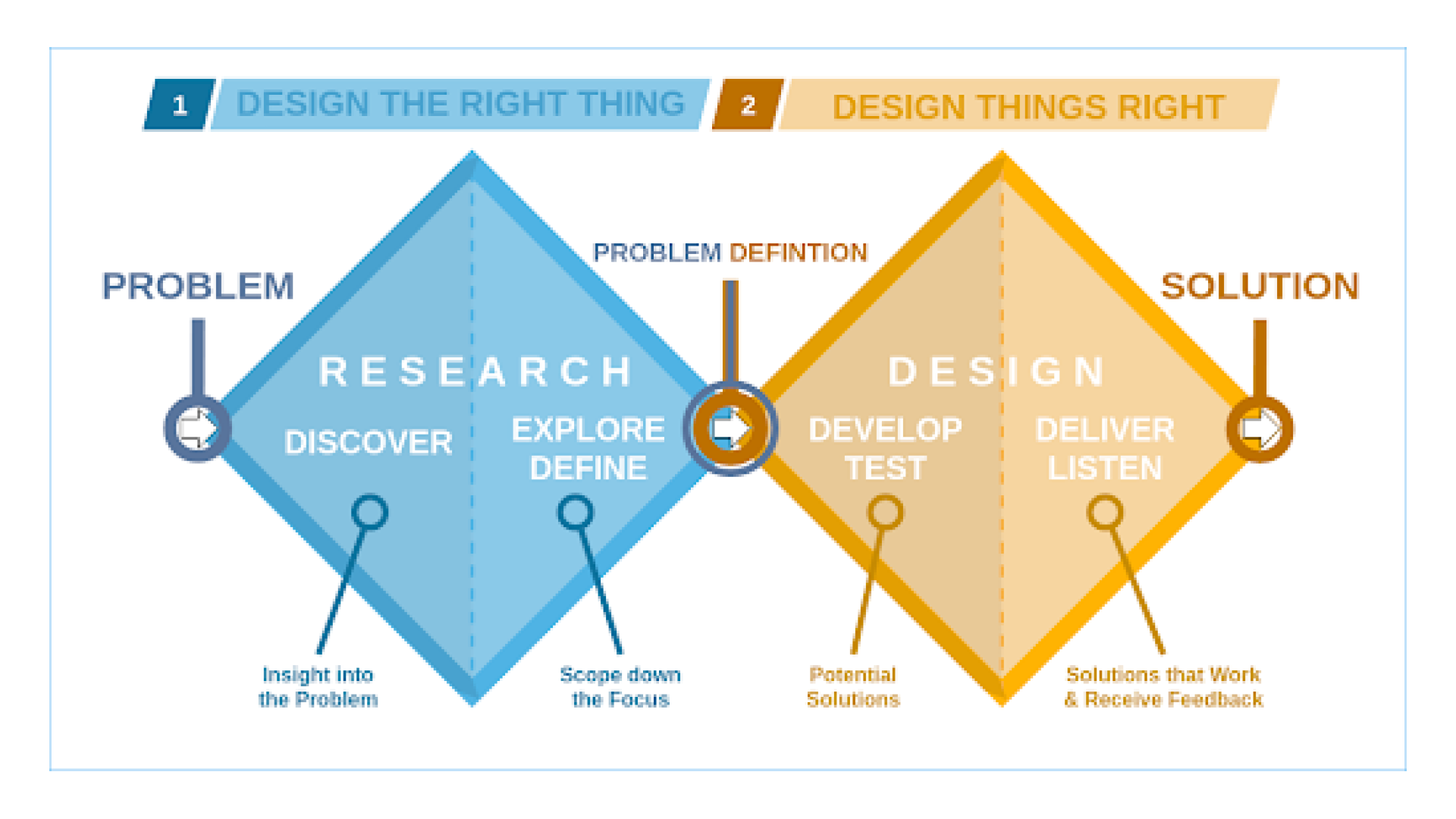 Image source: Digi-ark
Image source: Digi-ark
With little to no collaboration, the burden is on the researcher to effectively communicate the data to the designer. This can set a shaky foundation for the designer and doesn’t provide much support to fall back on if the project is heavily segmented, a team change occurs, or designs are challenged. It’s easy to see how data can get lost if projects aren’t perfectly aligned from beginning to end (which we all know is not very likely).
The solution: Strengthen the relationship between research and design
With this challenge in mind, how can we alter the process to become more inclusive, remove the disconnect, and ultimately limit the pressure on both researcher and designer? If we want to promote collaboration in the design process, we need to stop implementing the exclusive double diamond approach and begin to think about how to create more inclusion and unify the teams.
When design and research overlap, it alleviates the stress on the researcher to be the sole communicator and gives designers a seat at the table. This means that the researcher has an ally and decreases the monopolization of knowledge while making it easier for the designer to empathize with the data since they’re a part of the collection and synthesis. As a result, designs have a stronger foundation in the findings, and both the designer and researcher have a larger part in the product.
However, giving designers a seat at the research table presents another challenge. What tools do we have to help provide the team with resources to communicate and collaborate? What can the team capitalize on to make data feel manageable for designers yet comprehensive for researchers? What can we use to document this in a sustainable way that future designers can draw on? This is where affinity mapping can help.
Affinity Mapping, a tool for collaboration
For those unfamiliar with this tool, affinity mapping is a process in which data is analyzed and translated onto a board via sticky notes. Key words and notable themes are picked out, written onto these stickies, and then arranged into categories. These categories make it easy to see findings from a high level to a detailed view. Since the process is done on a medium that involves sticky notes and colors and doesn’t require the designer to deep dive into all of the data, it makes the data feel more approachable. This can be a huge benefit to those designers who don’t feel passionate about spending a lot of time processing data but who need to—and deserve to be a part of the process.
Furthermore, what’s amazing about affinity mapping, and what makes it such a collaborative resource, is that researchers and designers can approach it from different perspectives that work towards the same goal. Researchers can pick out language that indicate behaviors, for instance, while designers can prioritize UX complaints. The result is a board (or multiple) that has a holistic view of what the customer is experiencing. It’s dynamic; it can be updated and sustainable since designers can reference it to hold themselves accountable to the original data. It’s a tool for collaboration and also accountability.
How to get started with affinity mapping
To utilize affinity mapping for collaboration, the designer is ideally part of the data collection process. If that’s not realistic though, the following steps don’t need to change. Here is one approach we’ve found successful when utilizing affinity maps to maximize collaboration for the smoothest transition of data.
1. Researcher: Take good notes and record if possible
To prepare for later synthesis, make sure to take detailed notes and/or have recordings available if possible. These notes will set the team up for success later on down the road—in addition to just being good practice.
2. Designers: Familiarize yourself with the data
If you weren’t a part of the collection process (interviews, focus groups, etc.) and have the time, try to listen to any available recordings. If that’s not possible, do an in-depth review of the researcher’s notes and any deliverables they prepared. This is an alternative to understanding the data without being a part of the collection and can happen asynchronously to the researcher’s time. However, it is always a good idea to set up a meeting with the researcher to review their preliminary findings and notes.
3. Designers + Researchers: Find a time to map!
After review of the data on hand, either find a time to affinity map on your own or together. Some prefer to affinity map individually and take their time, but affinity mapping together can be beneficial in case there are any questions about the data. Whether or not those involved mapped separately or with one another, it’s important to find time to go over what everyone accomplished together. When you meet, go over categories, discuss areas that seem opposing to one another, and develop intersectional findings.
4. Designers + Researchers: go over findings with the team
After the map (or maps) are complete, and findings are further synthesized, go over them with the larger team (beyond just research and design). This will give important context about the synthesis and help align the team on conclusions. This conversation also sets the stage for a deeper dive into key themes if a readout deck is being delivered to stakeholders.
The benefits of affinity mapping
The result of this process is a deliverable that documents major and nuanced themes of the research into an organized map that translates the data out of the research stage into the design phase. In addition to building general team cohesion, affinity mapping has two major benefits: the gap between research and design is closed, and the team has a dynamic tool to return to later.
Bridging the gap between research and design
The biggest benefit of an affinity map is that research and design get to collaborate through a tool that meets the needs of both teams (and phases). While the research team gains new perspectives on data that can be synthesized in a readable and organized fashion, the design team gets to participate in those findings and contribute to conclusions that are the foundation for their designs. This collaboration helps bridge the gap between research and design by allowing the designers the opportunity to create a product rooted in analyses that research can trust since they processed the data together.
A dynamic, returnable tool
Furthermore, the map creates a space that team members can return to and remind themselves of what was learned. Since it’s easily processed, recall of findings is simplified—and since it’s flexible, any new findings can be filtered in to strengthen old themes or used to make new ones. This also makes it a great onboarding tool since new designers can use it to hold themselves accountable to past data and reference it when working on new features.
Better collaboration and communication with affinity mapping
Collecting data, communicating findings, and ensuring that data integrity is maintained as it transitions between project phases is always challenging. This challenge is amplified when they’re more voices and competing perspectives in a project. While affinity maps can’t help with all of this, they’re a good tool to help bring designers into the research and foster effective collaboration to help push findings through the design phase.
While many teams segment research and design, affinity maps can be utilized as a resource to help decrease this siloing and bring design in earlier for more perspectives, greater insight, and a stronger reliance on data. Our team has reaped the benefits—check out our affinity mapping template and improve collaboration between your research and design teams.

